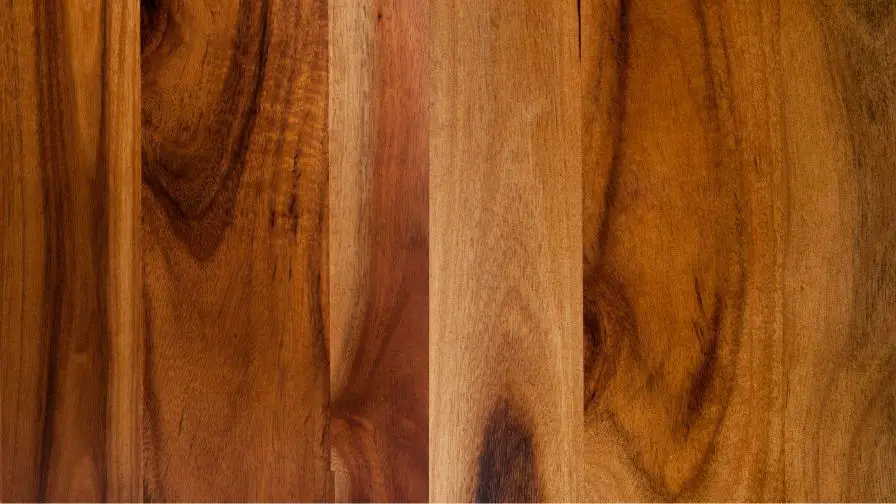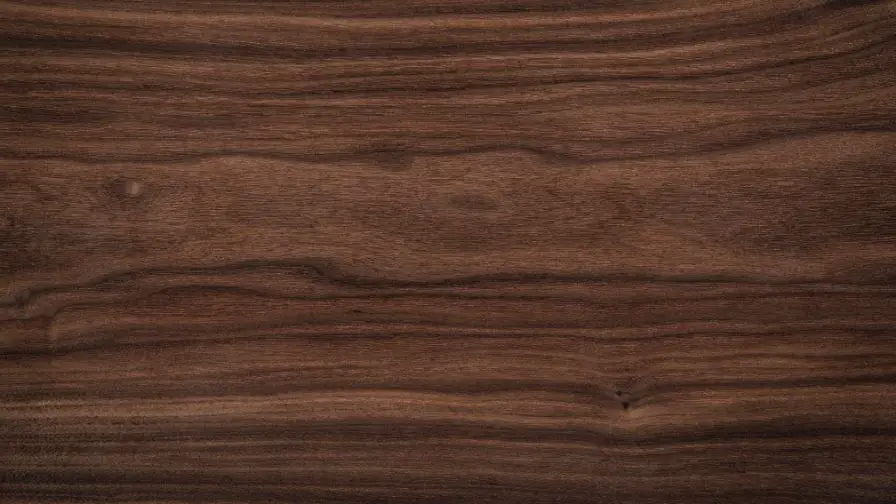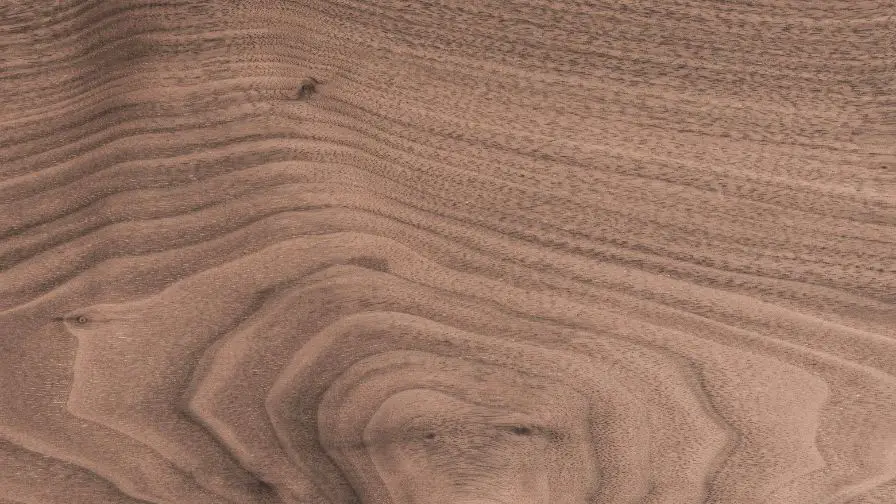
When it comes to wood, there are many different types to choose from. Acacia and Walnut are two of the most popular options. Both have their own unique benefits and drawbacks, so it can be difficult to decide which one is right for you.
In this comprehensive guide, we will compare and contrast Acacia vs Walnut in order to help you make the best decision possible!
What Is Acacia Wood?
Acacia wood is a type of hardwood that comes from acacia trees. These trees are native to Australia, but they can also be found in Africa and South America. Acacia wood also called Wattle is often used in furniture and flooring because it is durable and has a beautiful grain.
Acacia wood is usually a light golden brown color, but it can also be a dark chocolate brown. The grain of acacia wood is usually straight, but it can also be wavy or curly.

What Is Walnut Wood?
Walnut wood is a type of hardwood that is typically used in the construction of furniture and cabinets. It is also a popular choice for floors and paneling. Walnut wood has a dark brown color with a straight grain pattern.
Walnut wood is available in two main types: black walnut and walnut. Black walnut is the more expensive of the two types.
Walnut wood is available in two different grades. Grade A walnut wood is the highest quality and is typically used in high-end furniture. Grade B walnut wood is of lower quality and is often used in lower-priced furniture or for construction purposes.
Walnut wood is a hardwood that is strong and durable. It is also resistant to warping and twisting. It is easy to work with and takes stain well.

ACACIA VS WALNUT
| CATEGORY | ACACIA WOOD | WALNUT WOOD |
| PRICE | The price of Acacia wood varies depending on the quality of the lumber and can range from $8.99-$9.99/board foot. You can order natural, high character and premium walnut boards. If you order in bulk you can get cheaper pricing. | The price of Walnut wood varies depending on the quality of the lumber and can range from $11.99-$20.99/board foot. You can order natural, high character and premium walnut boards. If you order in bulk you can get cheaper pricing. |
| JANKA HARDNESS | Dried Acacia for flooring Janka Hardness Scale is 1750 Green Material Acacia Janka Hardness Scale is 1280 | Walnut Janka Hardness Scale is 1010 |
| DURABILITY | Acacia’s durability makes it a great candidate for outdoor furniture. It is often used in boatbuilding and other water-based applications because it is resistant to rot and decay. | Walnut’s durability makes it ideal for furniture and cabinetry. |
| SPECIES | Acacia species is called black wood due to the heartwood’s very dark coloration. The sapwood is a creamy white, and it can sometimes be difficult to see the line between the two. | Walnut species is called Juglans and it belongs to the Juglandaceae family. |
| TREE SIZE | Acacia trees can grow to be quite large, sometimes reaching heights of over 80 feet and 60″ in diameter. When it comes to tree size, acacia definitely has the advantage. | Walnut trees are generally smaller, averaging between 20 and 60 feet tall with a spread of 50-75 feet. Walnut tree leaves are larger, darker green, and have a rough texture. Walnut trees have a more rounded canopy. |
| LOCATION | Acacia trees are native to Australia, Africa, and the Middle East. With newly found information it is debated on the origin of the Acacia tree previous thought to be native to Africa the discovery of almost 1000 species in Australia has caused us to rethink it’s origin. The International Botanical Congress has now decided that Australia will be the native area on record and the African acacia species have been renamed. | Walnut trees are native to the Mediterranean region but are also grown in other parts of the world including North America, Europe, and Asia. Walnut trees prefer a temperate climate with well-drained soil. |
| COLOR | Acacia wood is light to medium brown in color with a yellow or reddish hue. Acacia blossoms are small and fragrant with a yellow or white color. | Walnut wood is typically a chocolate brown color with darker streaks running through it. Walnut wood may also have a slightly purple hue to it. Walnut, on the other hand, has a more consistent color. It is usually a dark chocolate brown but can also be found in lighter shades. Walnut blossoms are greenish-yellow. |
| GRAIN | Acacia grain is diffuse porous, meaning that the pores are spread out evenly across the wood and don’t follow any specific pattern. This type of grain offers a very consistent look to your furniture. It has a fine to medium texture with a straight grain that can be interlocked or wavy. | Walnut wood grain is straight grained and pores are much larger and more spaced out. Walnut wood grain is more open with a looser feel and a rough texture. |
| END GRAIN | Acacia End Grain is very smooth with a fine, even grain. It is also very hard and dense. | Walnut End Grain is smooth, with small, uniform pores arranged in a spiral pattern. Walnut on the other hand is a softer more open grained wood that will show knife marks more readily. Walnut also has a limited range of colors and grain patterns. |
| ROT RESISTANCE | Acacia’s rot resistance is very strong. In fact, it’s so resistant that the wood is used in boatbuilding! It has a moderate level of density and is not as hard as oak, making it easier to work with. | Walnut’s rot resistance is due to the chemical properties of juglone and its low density. Walnut is a relatively soft wood, and its low density makes it more difficult for decay-causing fungi to penetrate the wood. |
| SUSTAINABILITY | Acacia trees are native to Australia, Africa, and South America. They grow quickly and are often used for wood products such as furniture and flooring. The quick rate of growth and adaptability to be grown in various parts of the world make this tree more sustainable than Walnut trees. | Walnut trees can be harvested after reaching maturity between 40-60 years old. It is not as sustainable because it is a less common resource and takes longer to grow. |
| USES | Acacia wood can be used for flooring, furniture, decks, siding, shutters, musical instruments, cabinetry, veneers and gunstocks. | Walnut wood can be used for furniture, cabinetry, gunstocks, veneers, interior paneling, cutting boards, marquetry inlays, checkboards, flooring, millwork, desks, dining tables and butcher blocks. |
| RELATED SPECIES | Acacia related species are also known as acacia wood there are over 1,000 related species. These are deciduous trees or shrubs that mostly grow in tropical and subtropical regions. They have phyllodes instead of true leaves. Many species are cultivated as shade trees, ornamental plants, or timber crops. | Walnut related species are found mostly in the southern hemisphere but some grow in the northern hemisphere as well. There are about 30 related species of walnut including black walnut, butternut, and heartnut. walnuts are evergreen. |
ACACIA VS WALNUT: PROS & CONS
| ACACIA | WALNUT | |
| PROS | The pros of Acacia wood are that it is very strong and durable. It is also a very beautiful wood with a rich, dark color. | The pros of Walnut wood are that it is very strong and durable. Walnut is also a popular choice for furniture because it has a beautiful grain pattern. Walnut can be stained or painted to match any decor. |
| CONS | The cons of Acacia wood are that it may be harder to work with compared to other wood and can be difficult to find because considered exotic wood in the United States. | The cons of Walnut are that it is susceptible to scratches and dents. Walnut is also a bit more expensive than some other types of wood. |
Acacia is best for:
– Hardwood floors
– DIY projects
– Countertops
-Cutting boards
If you’re looking for a strong and sturdy wood, acacia is a great option. It’s often used in hardwood floors and DIY projects because it’s easy to work with. Acacia is also a popular choice for countertops and cutting boards since it’s so durable.

Walnut Wood Is Best For:
-Making high-quality furniture
-Creating beautiful floors
-Constructing cabinets and other storage solutions
If you’re looking for a wood that will give your home a luxurious look and feel, then walnut is the way to go. This type of wood is often used in high-end furniture and flooring, as it has a rich, dark color that really makes a statement.
It’s also perfect for constructing cabinets and other storage solutions, as it is both strong and stylish. So if you’re looking to add a touch of luxury to your home, then walnut wood is the way to go.

Is Acacia Wood Similar To Walnut?
Yes, Acacia wood is similar to Walnut. Both are hardwoods that are popular for furniture and flooring. They also have a rich, dark color with interesting grain patterns.
However, there are also some significant differences between these two types of wood. Acacia is actually a much harder wood than walnut, which makes it more durable. It also has a higher density, which means it’s less likely to dent or scratch.
Is Acacia A Type Of Walnut?
No, Acacia is not a type of Walnut. Although they share a similar appearance, the two are not related. Acacia is a member of the pea family, while walnuts are part of the Juglandaceae family.
Acacia vs Walnut Cutting Boards
When comparing Acacia vs Walnut cutting board the main difference would be the price and the density of the wood. Depending on your preferences either option would be a good selection.
Acacia Cutting Boards:
- More affordable than Walnut
- Similar look
- More dense wood so knives won’t cut as far into the board leaving less room for bacteria
- Could blunt knives faster than walnut
Walnut Cutting Boards:
- More expensive than Acacia
- Beautiful look
- Slightly softer wood reducing the rate of blunting knives
- Won’t allow as deep of cuts into the board compared to plastic cutting boards
Subscribe to Wordsnwood (Art Mulder) on YouTube



